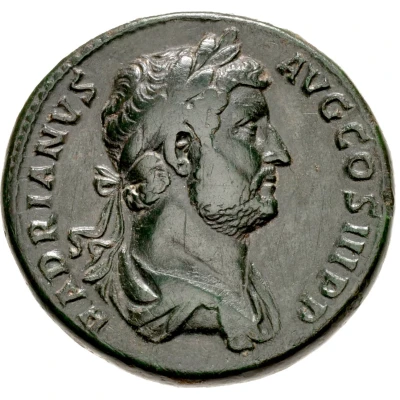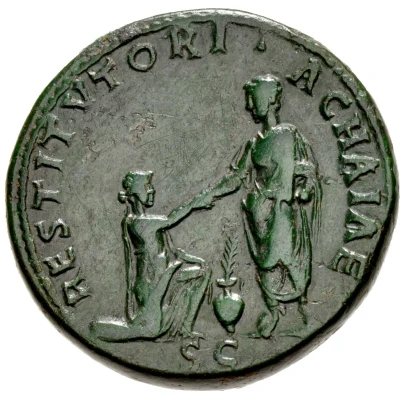Sestertius - Hadrian // IVDAEA S C; Judea
| Orichalcum | 25 g | 32.5 mm |
| Issuer | Rome › Roman Empire (27 BC - 395 AD) |
|---|---|
| Emperor | Hadrian (Publius Aelius Hadrianus) (117-138) |
| Type | Standard circulation coin |
| Years | 130-133 |
| Value | 1 Sestertius = ¼ Denarius |
| Currency | Denarius, Reform of Augustus (27 BC – AD 215) |
| Composition | Orichalcum |
| Weight | 25 g |
| Diameter | 32.5 mm |
| Shape | Round (irregular) |
| Technique | Hammered |
| Demonetized | Yes |
| Updated | 2024-10-06 |
| Numista | N#256285 |
|---|---|
| Rarity index | 100% |
Reverse
Hadrian standing right, raising kneeling Judaea; between them, two children holding palms; behind Judaea, one child holding palm.
Script: Latin
Lettering:
// IVDAEA
S C
Translation:
Iudaea. Senatus Consultum.
Judea. Decree of the senate.
Comment
Source: Online Coins of the Roman Empire (OCRE)Interesting fact
The Sestertius coin , which features Emperor Hadrian and was minted in Rome between 130-133 AD, is made of a metal called Orichalcum. Orichalcum was a type of brass alloy that was used in ancient Rome for coins and other objects, and it was prized for its durability and resistance to corrosion. The use of Orichalcum in coins like this one helped to establish the Roman Empire as a major economic power in the ancient world.

